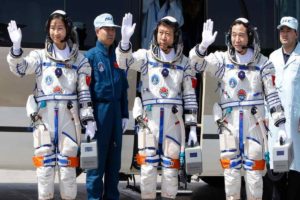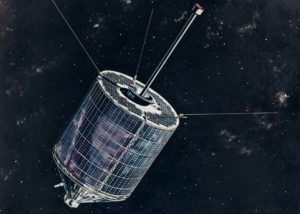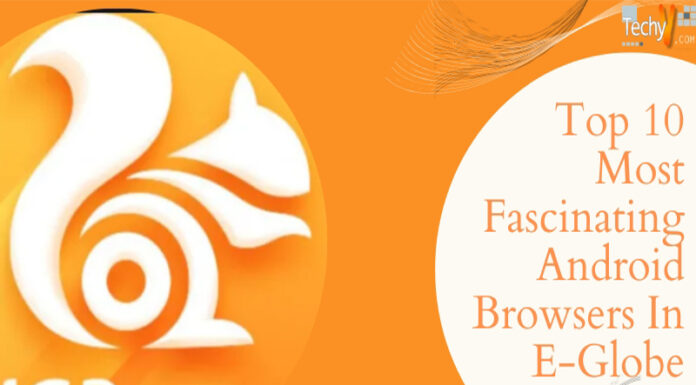The first satellite named Sputnik was launched in 1957 by the Soviet Union. Since then, various other countries across the globe have launched satellites to space as well. These satellites have changed human life by developing hundreds of facilities, like remote sensing, weather forecasting, space colonization, etc.
There are different satellites for different purposes. For example, the geostationary satellites for TV broadcasting, disaster warning, education and communication, the operational remote sensing satellites for agriculture, and many other satellites have come into use for forestry, ocean resources, astronomy, sciences, etc. So let’s have a look at countries that are most active in space and influencing the world.
1. The USA

Accounting for over 30% of the operational spacecraft currently in orbit around the Earth, the US is leading the chart of the top 10 countries in space technology. The first satellite was launched in February 1958 and currently operates a large fleet of communications, technology, electronic intelligence, weather, navigation, missile detection, and surveillance satellites.
The US accounts for one-third of the operational spacecraft. The Skylab space station, International Space Station (ISS), Space Shuttle, the Apollo moon-landing missions, Mars Exploration Rover – Opportunity, and Mars rover Curiosity are the keystones of the nation’s space program. The National Aeronautics and Space Administration (NASA) handles the space exploration efforts of the USA.
2. China

The China National Space Administration (CNSA) is the national space agency of China that handles the federal program & planning and development of space activities.
China is the second-largest active country, which owns and manages the spacecraft in orbit and currently operates several constellations of navigation satellites, communication satellites, remote sensing satellites, surveillance, and spacecraft. China is one of the three countries with the potential to recover satellites and conduct a human-crewed space flight.
China’s special missions include the Chinese Lunar Exploration Program (CLEP), Tiangong-1 space platform, and Shenzhou staffed space flight program. The China Aerospace Science and Technology Corporation (CASC) is state-owned, and also, the prime contractor responsible for the planning and development of launching the vehicles and satellites, also known as commercial launch services.
3. Russia

The Roscosmos State Corporation for Space Activities, also referred to as Roscosmos, is a state corporation that looks after the space flight and cosmonautics program for the Russian Federation.
In 1957, when the Soviet Union launched the world’s first artificial satellite Sputnik 1, the Russian space program was born. The nation now supervises the third largest fleet of spacecraft, including communications, meteorological, and reconnaissance satellites.
Some of the main projects include Soyuz manned spacecraft, Salyut 1 space station, and Lunokhod 1 space rover. The Russian Federal Space Agency (Roscosmos) handles civilian space activities, whereas the Russian Space Forces (VKS) lookout for defense satellite launches and military flight control assets.
4. Japan

The Japanese national aerospace and space agency is named JAEA (The Japan Aerospace Exploration Agency). On October 1, 2003, JAXA formed by merging three previously independent organizations.
The first Japanese satellite, Osumi, was launched into space in February 1970, becoming the fourth nation after the USSR, the US, and France to possess the earliest satellite launch capability. It currently takes care of a fleet of meteorological, communications, earth observation, and astronomical satellites.
One of the major Japanese space programs is the Japanese Experiment Module (KIBO)-ISS, H-II Transfer Vehicle KOUNOTORI5 (HTV5), and H-II launch vehicle. The Japan Aerospace Exploration Agency (JAXA) controls the national aerospace research and development activities.
5. The United Kingdom

The European Space Agency is an intergovernmental organization containing 22 member states dedicated to the exploration of space. It was founded in 1975, and therefore the headquarters are in Paris, France. ESA has an annual budget of about €5.25 billion / US$5.77 billion with a worldwide staff of about 2,000.
In 1962, the United Kingdom launched its first satellite Ariel 1, making it the third nation after the USSR and thus the US, to launch an artificial satellite into orbit. The government presently operates an excessive number of satellites, including civil and military communications satellites, earth observation satellites, and scientific & exploration spacecraft.
The UK is one of the foremost critical monetary contributors to the ESA. The UK also participates in the advanced science and exploration missions, like Bepi Colombo, Euclid, and Exo Mars Rover administered by the ESA. The UK Space Agency (UKSA) is responsible for the establishment of the national civil space program.
6. India

The Government of India features a space agency called The Indian Space Research Organization, having headquarters within Bangalore. Its motto is to “tackle space technology for national development while working towards space science research and planetary exploration. Since its maiden satellite launch in 1975, India has launched quite 80 spacecraft.
The state-owned Indian Space Research Organization (ISRO) controls the nation’s space research activities. India currently operates GSAT and INSAT series communication, IRNSS series navigational satellites, and earth observation satellites.
TES and Cartosat are dual-use satellites, which serve both civilian and military applications, whereas India’s first committed defense satellite GSAT-7 serves the military. India also launched the Mars Orbiter Mission (MOM) for $75m, spending approximately one-tenth of what NASA did on the MAVEN Mars mission.
7. Canada

The Canadian Space Agency Act launched the Canadian Space Agency, which received Royal Assent on May 10, 1990. The agency reviews the federal Minister of Innovation, Science, and Economic Development.
Canada launched its first satellite Alouette 1 in 1962, making its debut in space. It currently operates a fleet of ANIK communications satellites, BRITE science satellites, RADARSAT & SCISAT earth observation satellites, and micro & hybrid spacecraft.
The Canadian Space Agency (CSA) controls the Canadian space program. Currently, the nation doesn’t have its launch system and depends on the US, India, and Russia to launch its spacecraft.
8. Germany

The Federal Republic of Germany has a national center called, German Aerospace Center, also abbreviated as DLR, which takes care of aerospace, energy, and transportation research. It is headquartered in Cologne and has many other locations throughout Germany.
The first satellite named Azur was successfully launched in 1969, demonstrating Germany’s space-faring capabilities.
The country has launched several spacecraft, including navigation, telecommunications, and earth observation satellites. They are involved in the primary missions such as European space laboratory Columbus, Cassini-Huygens mission to Saturn and its moons, Dawn – Mission to Vesta and Ceres, and the European Galileo navigation system.
The German Aerospace Center (DLR) established the national space program, which supports the German space industry to meet the tactical goals in the European programs associated with the ESA and the EUMETSAT.
9. France

The French Government Space Agency has the National Centre for Space Studies, located in central Paris, and supervised by the French Ministries of Defense and Research.
The French space program includes both civil and military space missions. Its space policy was established by the state-owned Centre National d’Etudes Spatiales (CNES), which takes care of the development and execution of space programs together with industry and the scientific community. The country’s in-orbit spacecraft includes electronic signals, earth observation, reconnaissance satellites, intelligence satellites, civil and military communications satellites.
France is one of the most significant contributors to the European Space Agency (ESA), headquartered in Paris. The space research and development is done at Toulouse Space Centre, whereas CNES, ESA, and Arianespace handle the launches from the Guiana Space Centre.
10. Luxembourg

SES S.A. is a communications satellite owner and operator providing video and data connectivity worldwide to broadcasters, mobile and fixed network operators, content and internet service providers, governments, and institutions, with a motto to “connect, enable, and enrich.
Luxembourg handles many communications and remote sensing satellites, making it among the top nations with space existence. It is the Member State of ESA and keeps space research activities going under its National Action Plan for Space R&D. The Headquarters of the world’s leading telecommunications satellite operators SES (Société Européenne des Satellites) and Intelsat resides here.


















